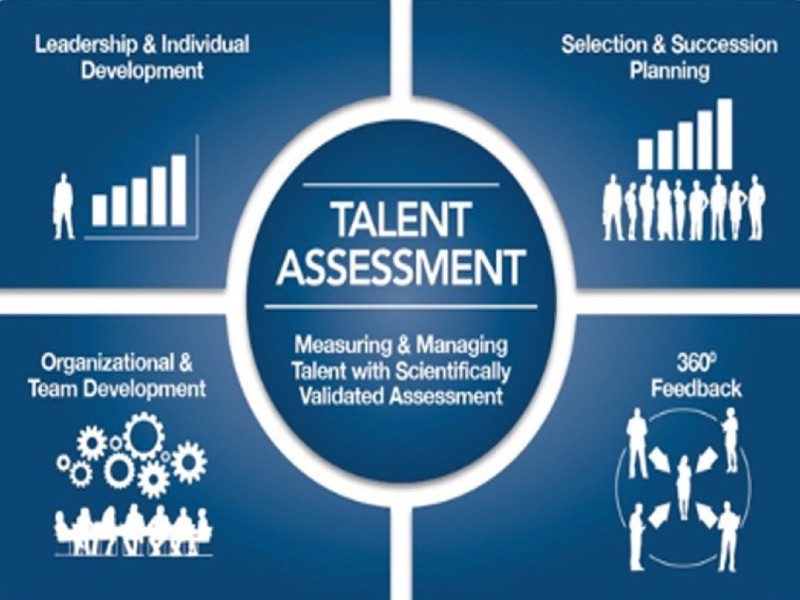Image from selectionlink.blogspot.com
Recently, I was talking to a client about succession planning. Having spent most of my career in large organizations I said we had three backups for every senior position. So many unpredictable factors influenced who was the right person that having three candidates made for more flexibility. The client pointed out that most printers in North America don’t have a large pool to draw from. A good point, which suggests the need to have external candidates in your plans.
Luckily for employers, great talent assessment tools are available. During the hiring process, a company thought they’d found an ideal candidate. However, after completing a personality evaluation, the candidate displayed some red flags, scoring high in antisocial / sociopathic traits and wasn’t extended an offer. We’ll never know if this test reflected the candidate’s true nature, but it’s better to be safe than sorry.
Even with a variety of personality tools available, HR departments may only use them for executive roles, which can be a missed opportunity.
Here’s what we believe at Connecting for Results and why we are talent tool advocates:
- Everyone has at least one “gift”. Most of us have more. In business and HR circles we call them “talents”.
- We don’t all have the same gifts and because we are not created equal the challenge is to recognize who we are and find a job/career that makes for the perfect fit.
- Some of our talents take years to develop. This is what competency is all about.
- Generally, graphic arts companies don’t do a good job of helping people discover their gifts and nurture them from hiring to retiring.
We say this up front because there is a general reluctance to do “psych evaluations” on candidates and employees. We consider this aversion misguided. It springs from two sources: fear of being charged with discrimination and fear of being accused of invasion of privacy. In the end it boils down to motive, and here’s where we come out strongly in favour of using talent assessment tools. They provide employers, candidates, and employees with the details to discover and explore their gifts and guide them to the right jobs.
The image above is a good overview of what talent assessment is all about. Except for 360 feedback, which is very focused, there are a variety of tools to explore individual, leader, and team member talents.
Here we’ll describe the various tools, our recommendations, and reasoning for being such staunch advocates.
- Psychometric Assessments evaluate a candidate’s personality, cognitive abilities, and behavioural traits. These assessments provide insights into a candidate’s fit for a specific role. Three very popular examples are the Predictive Index (PI), Myers-Briggs Type Indicator (MBTI) and the Caliper Profile Assessment.
- 360 Feedback is a tool that gathers feedback from multiple sources, including managers, peers, and subordinates, to provide a well-rounded evaluation of an employee’s performance, skills, and behaviours.
- Performance Management Systems track and evaluate employee performance against predefined goals and competencies. These systems often include features such as goal setting, continuous feedback, performance reviews, and development planning.
- Behavioural Interviews involve asking candidates to provide specific examples from their experiences to assess their skills, competencies, and behaviour in real-world scenarios. The objective is to gauge a candidate’s potential fit for a role based on their past performance.
- Talent Analytics and Predictive Tools use data analysis and machine learning algorithms to identify patterns and make predictions about future performance, retention, and potential. These are used most often in such areas as talent acquisition, succession planning, and workforce development.
When it comes to assessment tools for leaders, one size does not fit all. Evaluating a candidate’s leadership skills is very different from those of teams and individuals.
Our recommendation?
Start by setting an example and then include your rising stars.
- Have a Myers-Briggs Type Indicator assessment done on yourself and your direct reports. It provides insights into how each of you perceive the world, make decisions, and interact with others. It is often an eye-opener for companies who embrace this approach, leading to many “aha moments” when the profiles are plotted on a grid, showing how you and your direct reports differ.
- Try out the 360 Feedback tool with your “emerging potential” leaders. We think you and your employees will both benefit. Most, if not all of us, want to know who we are and how others perceive us and these insights can also help give employees a boost on their career path.
Ensure your HR team (especially your organizational development people) are familiar with the other assessment tools and select one that fits with your company culture and needs. In most cases a certified professional is required to properly administer and interpret these assessments.
Among the tools that are available:
- StrengthsFinder focuses on identifying and leveraging individuals’ strengths. It helps individuals understand their unique talents and provides recommendations on how to apply those strengths in various aspects of work.
- Hogan Assessments examine various aspects of personality, values, and motivations to predict job performance and fit within an organization. It provides insights into areas such as leadership potential, decision-making style, and interpersonal effectiveness.
- DISC Assessment measures four primary behavioural traits: Dominance, Influence, Steadiness, and Conscientiousness. It helps individuals and organizations understand their communication styles, work preferences, and team dynamics.
Your finance team does an annual review of your financial health. We strongly recommend your HR team does a similar analysis of your organizational health and talent tools are as necessary as balance sheets, and profit loss statements. (Major corporations have an “AHRR” – Annual Human Resources Review process.)
If you’re looking for guidance, contact us. Our organization development and recruitment specialists are here to help.
By Gary Forget

